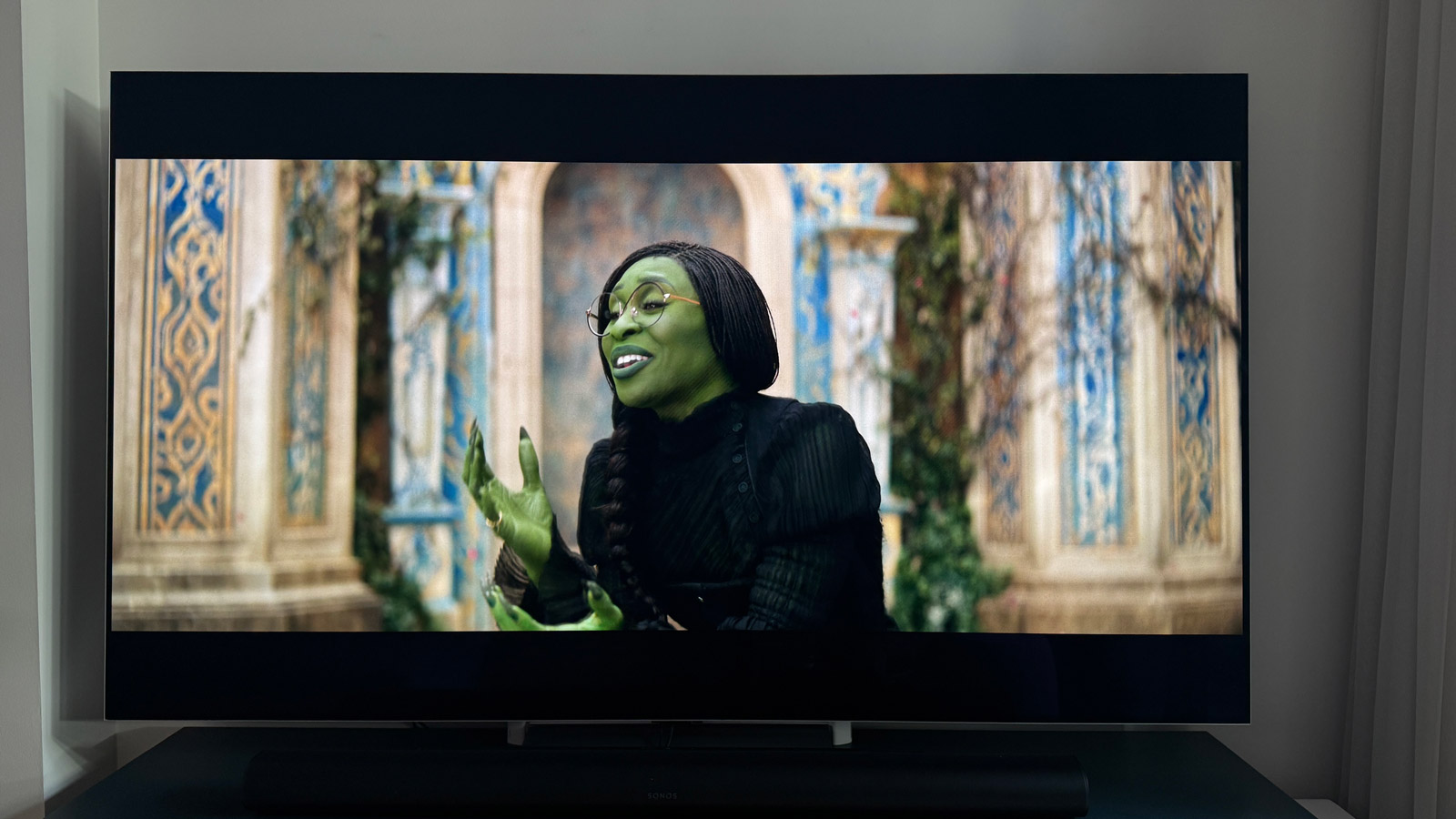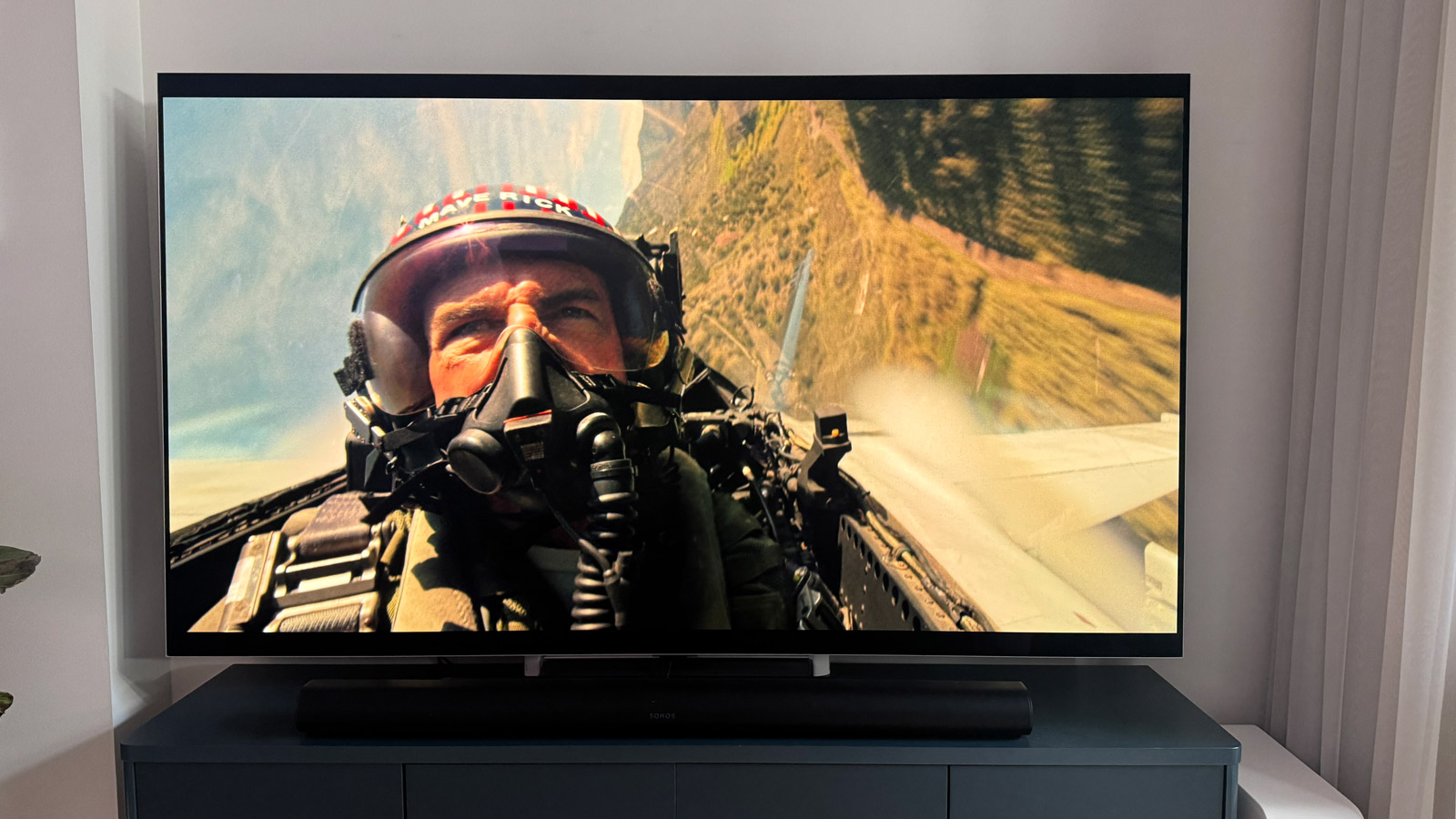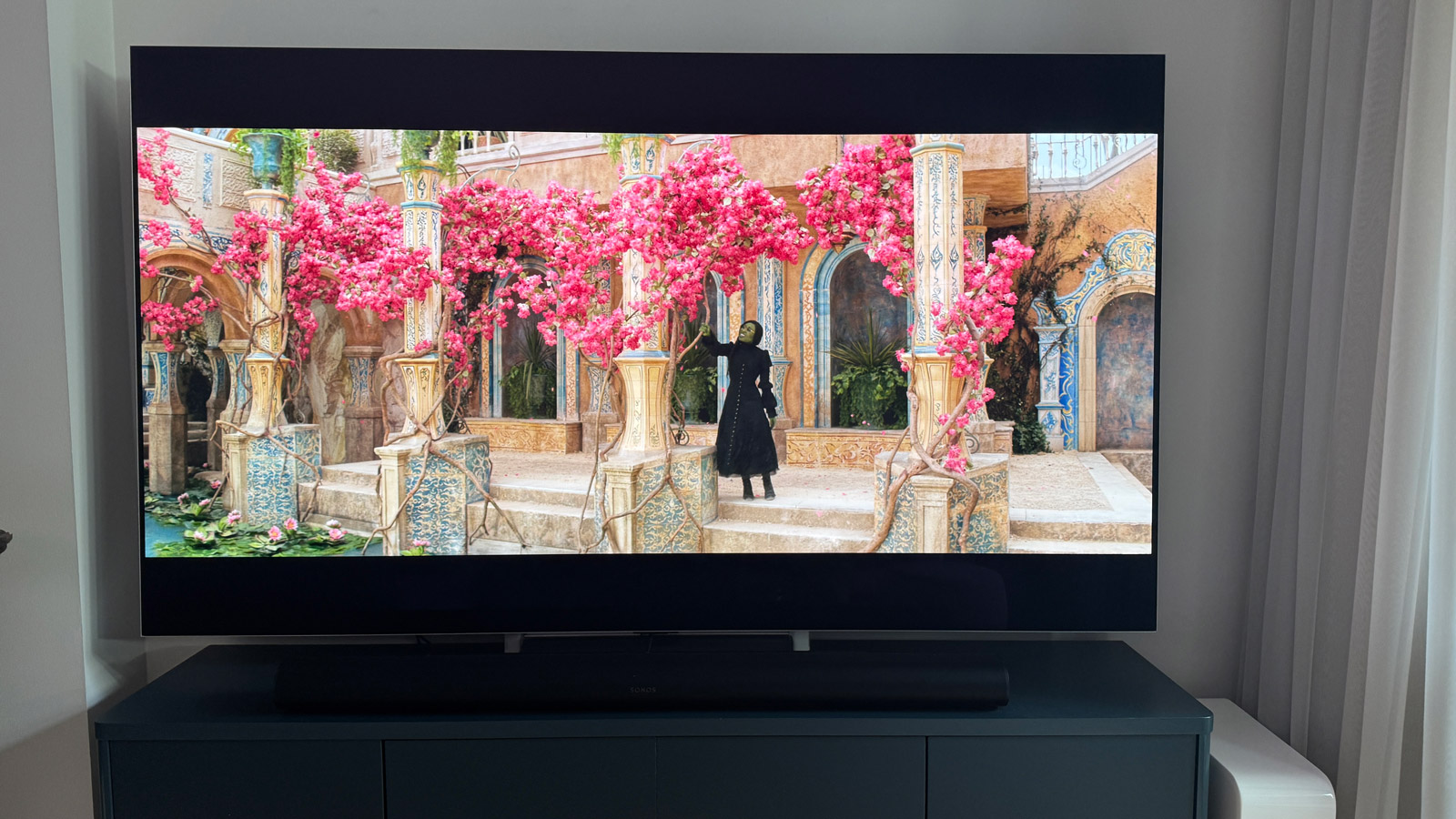I tried a super-bright 83-inch OLED TV and now projectors are ruined for me

I, like many of you I’m sure, love nothing more than curling up on the sofa to watch a movie. Perhaps unlike you, however, I also have an unshakeable need to watch said movies on a huge TV – ideally something from our guide to the best TVs – and with a full surround sound system to get the most enjoyment out of them. Why do things by halves?
Until recently, I was ‘making do’ with a 77-inch LG G4 OLED. It’s a phenomenal screen that made me fall in love with my movie collection all over again. But after a while, it began to look small. I needed something bigger. Something better.
To get a huge screen experience at home without spending the equivalent of a house deposit, a projector is your best bet – it’s perhaps the closest we can get to an ‘authentic’ home cinema experience.
I recently wrote our Hisense C2 Ultra review and found it to be outstanding when it came to color reproduction, sound and, perhaps most importantly, size, as I was able to project an image larger than 80 inches onto my wall. If I’d had it set up in my main room with my Sonos home theater system, I could have easily asked myself the question, “Have I achieved peak home cinema?”
The answer, as it turned out, was no. That’s because I’ve recently taken delivery of an 83-inch LG G5, one of the best OLED TVs money can currently buy. Thanks to its sheer size (I reckon I could still fit the 97-inch model in my viewing space), combined with its new, super-bright ‘four stack’ tandem RGB panel, the G5 has ruined projectors for me entirely.
Big screen, bigger brightness
Having previously owned the G4 OLED released in 2024, I wasn’t sure how LG could improve upon what I thought was the best screen I’d personally ever seen. But when I heard the rumors that the South Korean company had produced a new type of OLED panel, comprising individual blue, red and green layers to create light, and resulting in much higher brightness, boy, was my interest piqued.

As the measurements in our LG G5 review prove, it’s the brightest OLED we’ve ever tested, measuring 2,268 nits on a 10% HDR window in Filmmaker Mode. We tested the 83-inch version of the Samsung S95F, which shares the same panel as the LG model, and recorded a slightly higher reading of 2,388 nits. However, this measurement was taken at a Samsung event rather than in our own testing facilities.
Sign up for breaking news, reviews, opinion, top tech deals, and more.
What this means in real-world speak is that the LG G5 is highly adept at displaying HDR content, and it gives TV shows and movies a much greater sense of depth, as it’s able to better distinguish between light and dark areas of a picture. My colleague James Davidson has previously written a deep dive explaining just how good the G5 handles various content. From black-and-white movies such as Oppenheimer through to eye-popping color films like Elemental, and I couldn’t agree more when he says it’s “a truly picturesque TV”.
I normally have the brightness turned up to the maximum 100 setting, but there have been times, particularly when my room is especially dark, that I’ve had to turn it down. Leaving it at 100 can sometimes be retina-searing!

Projector brightness is measured in lumens, and so it’s trickier to compare. It’s claimed to get a rough equivalent, you can multiply the number of nits by 3.426 to get the brightness figure in lumens. In the LG G5’s case, taking the 10% window figure of 2,268, that would mean a projector would need to measure 7,770 lumens to be comparable.
While projectors do exist that can reach, or surpass, this figure, they’re usually reserved for large event spaces and not intended for home use. Therefore, a home projector simply can’t match the capabilities of the LG G5, making the TV a far better option for movie buffs like me.
Defence against reflections
Another area where the bright panel of the LG G5 has projectors beat is dealing with ambient light. This one might not come as that much of a surprise, but it’s something worth noting when deciding on how to kit out your main room for the ultimate viewing experience.
Your opinion on screen reflections may differ from mine. You may want to banish them entirely, or you may be OK with the odd reflection on the screen if the overall picture quality makes up for it. I’m in the latter camp, and find the LG G5’s combination of brightness – which does a fine job more often than not of combating reflections – anti-reflective coating and overall picture quality to be more than satisfactory.
I'm not in any way going to say there are no reflections in the G5's screen, because there are, they just don't bother me that much.
If you need to banish reflections completely, then a TV such as the Samsung S95F will be more to your liking. It employs a second-generation Glare-Free screen to dissipate light reflections across the screen into a haze-like effect.
James Davidson has also previously compared the anti-reflective capabilities of both the Samsung S95F and LG G5 side by side, so you can more easily determine exactly how both screens fare against pesky ambient light.

In my opinion, the way the Samsung TV deals with light results in too much of a grey tone across the screen. I can’t deny it does a better job overall with reflections, as I’ve never been able to see myself in the screen – something that can happen with the LG.
More often than not, though, I’m not watching TV in a super bright room (I often find it surprising that a lot of people do watch TV with all the overhead lights on, to be honest). Sure, there’s light coming in through windows from outside during the day, but when day turns to dusk and then to night, I have a few smart lights turned on around my room, and usually they’re set to minimum brightness. In these instances, Samsung's Glare-Free tech becomes redundant, and in my mind, it allows the LG G5 to truly shine.
With a projector, you’re going to struggle quite a bit in daylight conditions, although I did find the Hisense C2 Ultra did a decent job of combating ambient light during my review. At night, the situation naturally improves, but the fact remains it still can’t quite match the super-bright levels of the LG G5.
A stronger connection
The final reason why the LG G5 – and any TV for that matter – beats out a projector for my home cinema viewing is the fact that it allows for a neater solution when connecting external devices.
My soundbar sits below the TV with the connecting HDMI cable running through the TV's stand to the eARC port. Everything is tucked away nicely and tidily, and other external devices are hidden in the unit that the TV sits on.
If I wanted to set up a projector – let’s say, behind my sofa and viewing position – I’d have to run a long HDMI cable across my floor to reach the soundbar. No, thank you.

This does only apply to certain projector styles, however– i.e. long-throw projectors.
I’ve previously tested the Xgimi Aura 2 ultra-short throw (UST) projector and was pretty amazed by how well it performed. A UST projector could sit on my same TV unit and project an equally large image (or larger) onto the wall. But it needs dark lighting conditions to really come to life, and it uses the inferior Android TV operating system, which didn’t give me access to some streaming apps. LG’s webOS 25 OS, meanwhile, is virtually flawless in my opinion – I’m not such a fan of the new Magic Remote, however.
I did concede that the audio performance of the Aura 2 was far more impressive than expected, delivering a powerful, detail-rich sound with effective object placement. For authentic surround sound, it can be connected to an external system, which I imagine would be just as tidy a solution as what a TV provides.
With projectors such as the Hisense C2 Ultra, however, I would’ve most likely set it up on my coffee table in the center of the room. While it can project a large image from a short distance, my unit would have been too close for it to perform to its full potential. But then, where would I put my bottle of wine at night? It’s not a compromise I’m willing to make. The TV stays!
Peak cinema
Since owning the LG G5, I have been more excited than ever to watch a wide variety of movies and TV shows. I’ve even invested in a Sony UBP-X700 4K Blu-ray player and begun building my disc collection to take full advantage of the screen’s technological wizardry.
For me, I’ve hit peak cinema… at least until the LG G6 comes along.
You might also like
- I tested Samsung and Sony’s 2025 QD-OLED TVs side-by-side, and it’s a battle for the ages
- HDMI 2.2 is officially ready to bring 4K 480Hz, and even up to 16K video – here’s when to expect it on TVs and monitors
- I tried the next-gen version of the best budget portable projector, and it’s an amazing all-rounder that should have Samsung worried

Max is a senior staff writer for TechRadar who covers home entertainment and audio first, NBN second and virtually anything else that falls under the consumer electronics umbrella third. He's also a bit of an ecommerce fiend, particularly when it comes to finding the latest coupon codes for a variety of publications. He has written for TechRadar's sister publication What Hi-Fi? as well as Pocket-lint, and he's also the editor of Australian Hi-Fi and Audio Esoterica magazines. Max also dabbled in the men's lifestyle publication space, but is now firmly rooted in his first passion of technology.
You must confirm your public display name before commenting
Please logout and then login again, you will then be prompted to enter your display name.